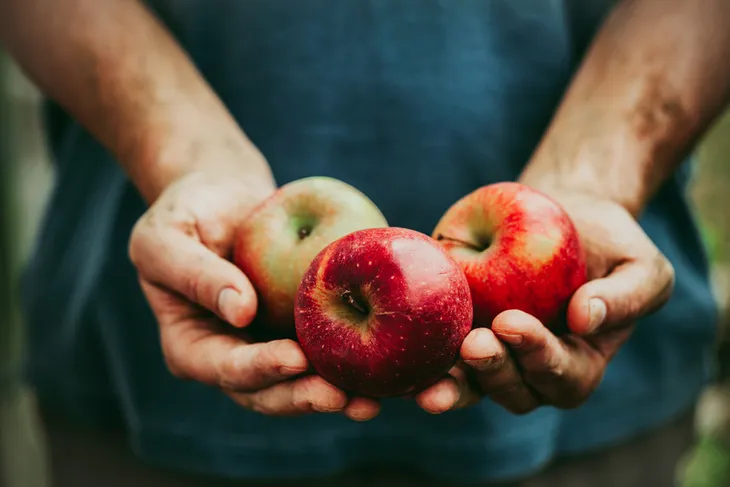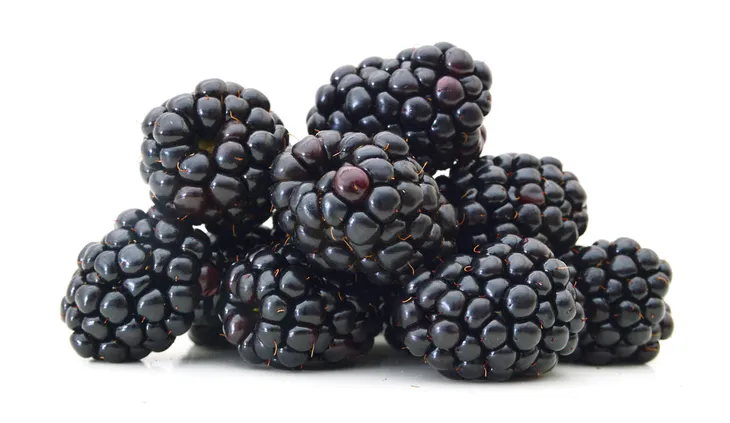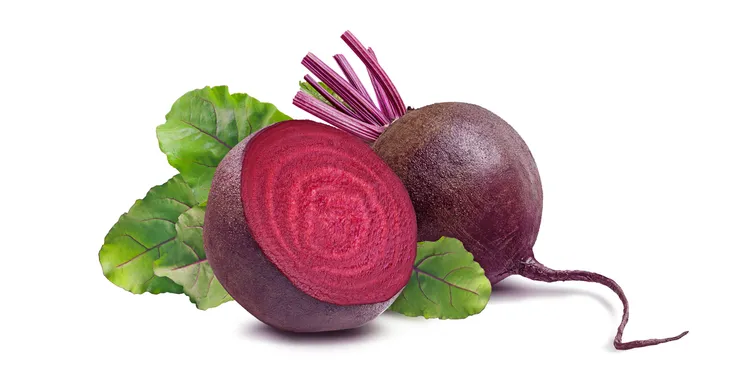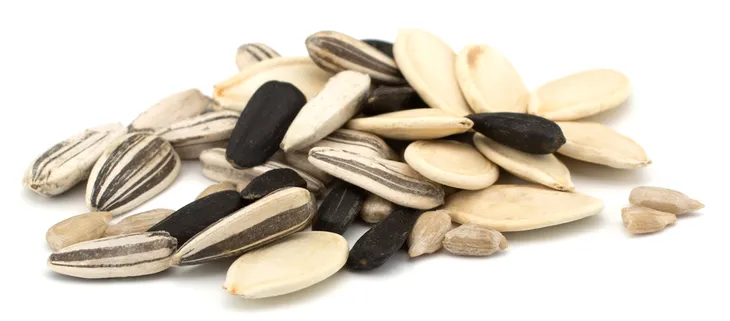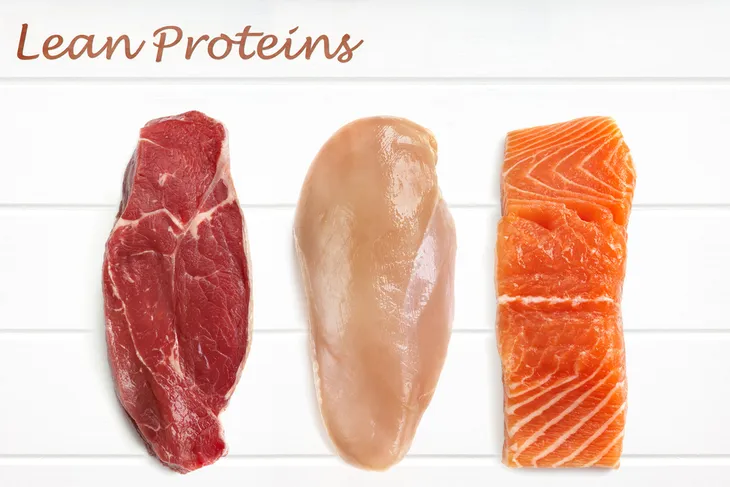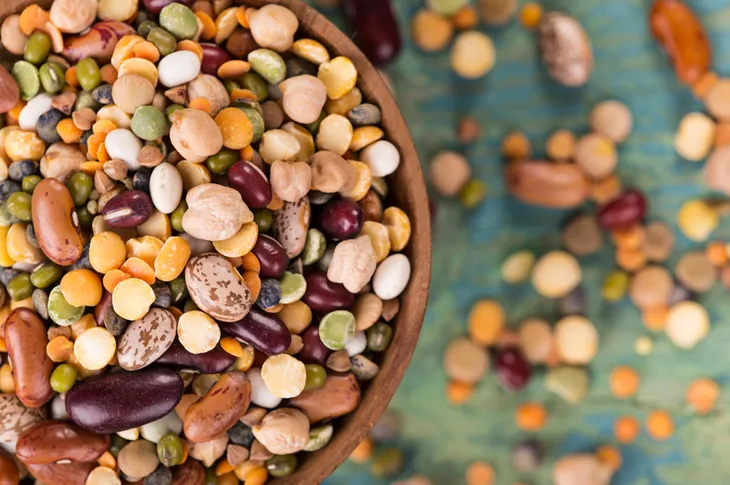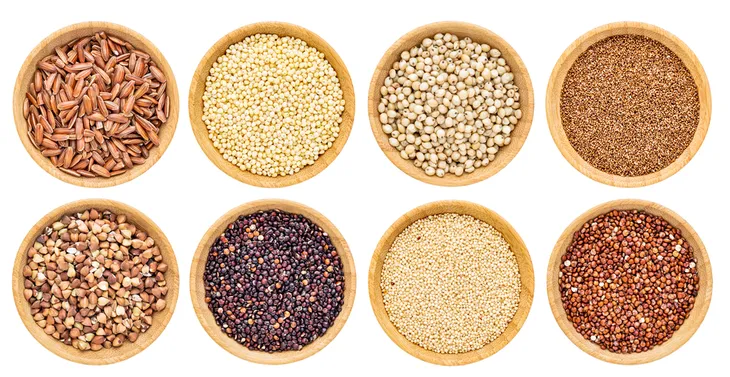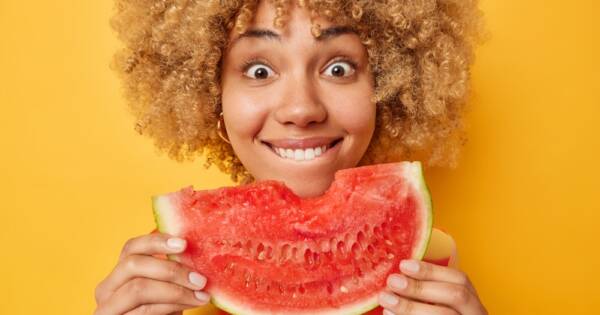The food we eat has a huge impact on our health in so many ways, some obvious like our weight, and others not so obvious like setting the stage for heart disease, diabetes, etc. When a person has a health condition like pancreatitis, diet is even more important. This is because the pancreas is the organ responsible for producing digestive enzymes, explains the Cleveland Clinic.
When a person has pancreatitis, the pancreas becomes swollen and inflamed and cannot do its job properly. Eating an unhealthy diet only puts more pressure on an organ that is already struggling and working overtime. “Whether the inflammation is acute or chronic, we want to minimize the extra workload for the pancreas,” says Prabhleen Chahal, MD, to the source.
For those who are suffering from pancreatitis or others who just want to learn more about it, here is a list of the best foods to eat…
Apples
Apples are a super great choice for people with pancreatitis because they are naturally high in fiber which means they’ll help reduce the risk of gallstones and high triglycerides, both of which cause acute pancreatitis, says Cleveland Clinic. They also work to lower inflammation and aid digestion, according to Dr. Axe. As the added cherry on top, apples are an easy snack to enjoy on the go or just to quickly prepare at home!
Just be sure not to eat too much fiber at once because it “can slow down digestion and result in less-than-idea absorption of nutrients from food,” writes Healthline. “Fiber may also make your limited amount of enzymes less effective.”
Blackberries, Blueberries and Cherries
Pretty much all berries are good for us. Plus they taste good too! There are so many great reasons to eat more berries and most of us don’t really need much convincing since they all taste pretty sweet and delicious. The best berries for pancreatitis are blueberries and blackberries because they are high in resveratrol, manganese, fiber and vitamin C, says Dr. Axe. You should also eat more cherries which are low in calories, but high in essential nutrients. They are a great choice for anyone who’s looking to shed some extra weight (this is another important lifestyle tip for those with pancreatitis) because they support weight loss, reduce inflammation, and help promote a good night’s sleep, says the source.
According to Healthline, another great reason to eat more blueberries and cherries is because they help protect the digestion process and fight free radicals that can damage our organs which is important for pancreatitis.
Spinach, Kale and Lettuce
You shouldn’t need much convincing when it comes to eating these dark, leafy greens, but just in case you don’t already — you should start now! Kale is a cruciferous vegetable that is great for inflammation (hello, pancreatitis!), it also supports detoxification, eye health, protects against cancer, and is super easy and versatile for eating. It can be added to a smoothie or enjoyed in a salad. Now onto spinach. Dr. Axe explains that “spinach is packed with nutrients that boost immunity, protect against diabetes and protect against certain types of cancer.”
Lastly, good old fashioned lettuce. While it might not be as trendy and fancy as kale or spinach, it’s just as healthy! Salads are a large part of the mediterranean diet and a great way to ensure you’re eating some veggies throughout the day. “Choose darker leaf lettuces and mixed wild greens to enjoy the highest levels of vitamins and minerals,” says the source.
Foods Rich with Beta Carotene
You might be wondering what exactly beta carotene is…well, it’s that bright orange pigment found in foods like sweet potatoes and carrots, and it’s got some major health benefits. Personally, I love sweet potatoes. They’re a great healthier alternative to those starchy yellow potatoes, and to me, they have way more flavor! In addition to their beta carotene content, Dr. Axe points out that sweet potatoes have lots of vitamin C, copper, vitamin B6, and manganese. You can enjoy this food so many different ways too which makes it even better!
The other food that is high in beta carotene and beneficial for people with pancreatitis are carrots. The beta carotene in carrots makes them good for our “immune system health and eye health, as well as healthy digestion, while being one of the most versatile vegetables on the planet,” writes Dr. Axe.
Beets and Broccoli
Okay, so these two vegetables aren’t everyone’s favorite thing to eat, but they’re really healthy which means they’re worth it. Beets are “packed with essential nutrients like iron, manganese, copper, potassium and the B vitamins,” writes Dr. Axe. “Beets are known to improve heart health, brain health and support liver function.” What’s not to like there?
When it comes to broccoli, it can provide more than 100-percent of your daily recommended amount of vitamin K and vitamin C. It’s also “rich with minerals, this vegetable fights cancer and promotes digestive health.”
Seeds
Seeds may be teeny tiny in size, but they’ve got some big benefits! Dr. Axe explains that pumpkin seeds and sunflower seeds are among the best for pancreatitis. While they might make you think of summertime and baseball fields, sunflower seeds are also a great source of B vitamins, vitamin E, selenium, and magnesium. They contain lots of essential fatty acids, amino acids, and fiber. Similar to nuts (which we’ll get to next), sunflower seeds should be enjoyed in moderation because they are high in fat. Dr. Axe recommends sticking to half of a single serving and staying away from those salty commercially packaged kinds.
If sunflower seeds are a summer treat, then pumpkin seeds definitely remind us of jack-0-lanterns and crisp season of fall. Luckily, most of us now have access to pumpkin seeds year-round, and believe it or not, they aren’t just meant to be scooped out and thrown away. Pumpkin seeds make a really tasty snack, especially when they’re roasted. You can eat them on their own or as a topping on a salad or yogurt! Pancreatitis patients should consider adding pumpkin seeds to their diet since they are full of healthy fats, protein, and fiber. Yum!
Nuts
Nuts are a type of food that can be good for us as long as we eat it in moderation because they are also high in fat. We advise sticking to a single serving per day. The best nuts to eat when it comes to pancreatitis are almonds, walnuts, and pistachios. Also, this should go without saying, but the best options are always unsalted.
Almonds are a go-to snack for myself because they have so many health benefits. They’re packed with protein, fiber, and a number of essential vitamins and minerals. According to Dr. Axe, “research shows they help to control blood sugar levels, help with weight loss and may increase nutrient absorption of fat-soluble nutrients.” When it comes to walnuts, they are also super healthy with lots of omega-3s to support a healthy heart and brain, as well as the ability to control inflammation and maintain blood sugar levels. Lastly, we have pistachios. This nut is a popular party treat when it’s salted, but you should always buy them unsalted. Like most other nuts, stick to half an ounce serving because they are a sneaky source of fat. But let’s stick to the good stuff. What’s great about them is that they can lower cholesterol and help with weight loss, says Dr. Axe.
Lean Protein
As you can see by this list, there are plenty of food sources for protein. This is why the argument that a human needs meat isn’t valid and widely misunderstood! We can get protein from plenty of places, but the easiest place to get protein — a healthy, lean protein is wild-caught fish or chicken. Unfortunately, those fatty pieces of red meat don’t make the cut. You want to focus on lean sources of protein because people with pancreatitis are supposed to be limiting the amount of fat they eat. When it comes to fish, salmon is among the best. “The typical Mediterranean diet features a wild-caught fish or seafood at least twice each week,” writes Dr. Axe. “Wild-caught salmon is associated with healthy cognitive function, heart health and cancer protection.”
Lean pieces of chicken and turkey are also great. You can enjoy them baked or grilled. Just try and avoid frying them because as we already mentioned, we’re trying to keep fat levels to a minimum.
Legumes
Legumes belong to a family of plants called Fabaceae, and just like chicken, turkey and wild-caught salmon, they are a great source of lean protein. While they might sound like strange food, we eat legumes all the time. Some common examples are chickpeas, peas, beans, and peanuts. They are an important part of the pancreatitis diet. “High in protein, low in fat and high in fiber, legumes are an essential part of a healthy pancreatitis diet as they help to stabilize blood sugar levels and aid in weight loss,” explains Dr. Axe.
When it comes to pancreatitis, Dr. Axe specifically suggests eating beans like lentils, mung beans and garbanzo beans because they “contain lipase, a digestive enzyme released by the pancreas.”
Low-Fat Dairy
Among the worst foods for pancreatitis is high-fat dairy, but low-fat dairy is a whole other thing. There are tons of healthy low-fat dairy choices out there. Dr. Axe suggests trying greek yogurt, cottage cheese, or kefir. We’ll start with greek yogurt. This food is super healthy because of its protein, and the fact that it’s high in probiotics making it good for gut health. Just be careful when choosing it at the grocery store because there are many that come with added sugar or sweeteners. You don’t want those! You should choose plain Greek yogurt and sweeten it up at home with some fruit or a dab of honey.
You can also try eating cottage cheese. Even though it’s not everyone’s favorite, it can be a great snack option because it’s healthy with lots of vitamin B12s and calcium, yet satisfying and filling. Someone with pancreatitis should consider pairing it with some nuts, seeds, and fruit, says Dr. Axe.
Lastly we’re going to suggest kefir. If you’re already pulling up a Google search to find out what exactly kefir is we’ll save you the trouble. Kefir is a fermented milk drink, similar to a thin yogurt. Some people consider it to be even healthier than yogurt. It is “known for it’s immunity-boosting powers and healthy bacteria, which aids in digestion, this cultured dairy product provides protein, calcium and vitamin D,” writes Dr. Axe. You can enjoy it as a snack or swap it into your smoothie in the morning as a healthier substitute for dairy.
Whole Grains
Since refined carbohydrates like white bread and pasta are among the worst foods for pancreatitis, whole grains are the way to go. Luckily for us, there are tons of great sources of whole grains. The list that Dr. Axe provides includes brown rice, buckwheat, polenta, millet, teff, and amaranth. Some of these you’ve probably already heard of, while others, not so much. We’ll start with the most basic — brown rice. This food is high in fiber, rich with manganese and the best alternative to white rice. Just like most foods, you’ll want to monitor how much you eat because it can be high in calories.
Buckwheat is similar to rice, it’s high in protein and fiber, but a great gluten-free option. It’s got lots of antioxidants and it’s super easy to digest which is great for the pancreas. Polenta on the other hand is a rough grind that’s similar to corn. It’s commonly used in the Mediterranean. We’ve also got millet which is similar to buckwheat because it’s “high in fiber, naturally gluten-free and easy to digest,” writes Dr. Axe. Most people mistaken it for a grain, but the source points out that it’s actually a seed. Now onto the Ethiopian grain, teff. “This grain promotes weight loss, boosts the immune system, supports bone health and aids in digestion,” writes the source. You can use it to make porridge, pancakes and even tortillas.
Lastly (the one you’ve probably never heard of) is amaranth, an ancient grain that was used by the Aztecs. It’s high in fiber, manganese and protein. Dr. Axe adds, “this gluten-free whole grain aids in digestive health, reduces inflammation, and aids in weight loss.” All of the above are a great option for a whole grain in a diet tailored for pancreatitis.

